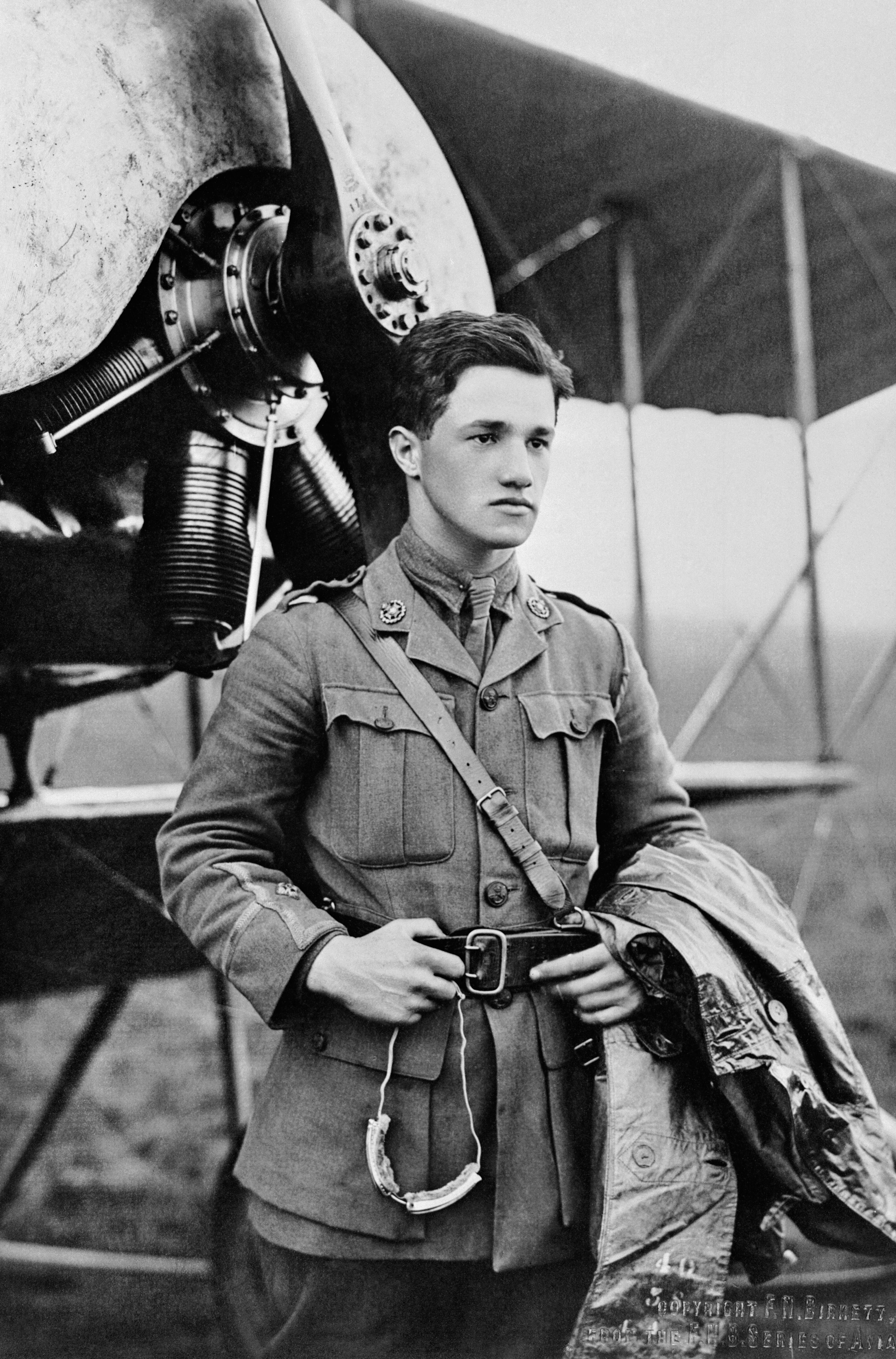|
Albert Ball
Albert Ball, (14 August 1896 – 7 May 1917) was a British fighter pilot during the First World War. At the time of his death he was the United Kingdom's leading flying ace, with 44 victories, and remained its fourth-highest scorer behind Edward Mannock, James McCudden, and George McElroy. Born and raised in Nottingham, Ball joined the Sherwood Foresters at the outbreak of the First World War and was commissioned as a second lieutenant in October 1914. He transferred to the Royal Flying Corps (RFC) the following year, and gained his pilot's wings on 26 January 1916. Joining No. 13 Squadron RFC in France, he flew reconnaissance missions before being posted in May to No. 11 Squadron, a fighter unit. From then until his return to England on leave in October, he accrued many aerial victories, earning two Distinguished Service Orders and the Military Cross. He was the first ace to become a British national hero. After a period on home establishment, Ball ... [...More Info...] [...Related Items...] OR: [Wikipedia] [Google] [Baidu] |
Nottingham
Nottingham ( , East Midlands English, locally ) is a city status in the United Kingdom, city and Unitary authorities of England, unitary authority area in Nottinghamshire, East Midlands, England. It is located north-west of London, south-east of Sheffield and north-east of Birmingham. Nottingham has links to the legend of Robin Hood and to the lace-making, bicycle and Tobacco industry, tobacco industries. The city is also the county town of Nottinghamshire and the settlement was granted its city charter in 1897, as part of Queen Victoria's Diamond Jubilee celebrations. Nottingham is a tourist destination; in 2018, the city received the second-highest number of overnight visitors in the Midlands and the highest number in the East Midlands. In 2020, Nottingham had an estimated population of 330,000. The wider conurbation, which includes many of the city's suburbs, has a population of 768,638. It is the largest urban area in the East Midlands and the second-largest in the Midland ... [...More Info...] [...Related Items...] OR: [Wikipedia] [Google] [Baidu] |
Flying Ace
A flying ace, fighter ace or air ace is a military aviator credited with shooting down five or more enemy aircraft during aerial combat. The exact number of aerial victories required to officially qualify as an ace is varied, but is usually considered to be five or more. The concept of the "ace" emerged in 1915 during World War I, at the same time as aerial dogfighting. It was a propaganda term intended to provide the home front with a cult of the hero in what was otherwise a war of attrition. The individual actions of aces were widely reported and the image was disseminated of the ace as a chivalrous knight reminiscent of a bygone era. For a brief early period when air-to-air combat was just being invented, the exceptionally skilled pilot could shape the battle in the skies. For most of the war, however, the image of the ace had little to do with the reality of air warfare, in which fighters fought in formation and air superiority depended heavily on the relative availability ... [...More Info...] [...Related Items...] OR: [Wikipedia] [Google] [Baidu] |
The King's School, Grantham
The King's School is a British grammar school with academy status, in the market town of Grantham, Lincolnshire, England. The school's history can be traced to 1329, and was re-endowed by Richard Foxe in 1528. Located on Brook Street, the school's site has expanded over the course of its history, with some school buildings dating back to 1497. Today, King's remains an all-boys grammar school, with just over 1,000 pupils. King's and another Grantham grammar school, Kesteven and Grantham Girls' School, share teaching resources for sixth form study in certain subjects; since 2006–2007, timetables for this study have been co-ordinated between both schools. King's boys generally take ten to eleven General Certificate of Secondary Education (GCSE) examinations in Year Eleven (aged 15–16), and they have a choice of three or four A-levels in the sixth form. An Office for Standards in Education, Children's Services and Skills (Ofsted) inspection in May 2008 graded The King's Schoo ... [...More Info...] [...Related Items...] OR: [Wikipedia] [Google] [Baidu] |
Steeplejack
A steeplejack is a craftsman who scales buildings, chimneys, and church steeples to carry out repairs or maintenance. Steeplejacks erect ladders on church spires, industrial chimneys, cooling towers, bell towers, clock towers, or any other high structure. In the UK, steeplejacks now use a belay rope fall-arrest system (similar to the method used by rock climbers) attached to the ladders as they are erected to eliminate solo climbing and greatly reduce the risk of falls from height. Once ladders have been erected, the next stage is usually to suspend a bosun's chair (a strong wooden plank on which the steeplejack can sit, pull themselves upwards or lower themselves downwards, or sit in a stationary position), but abseiling (UK) or rappelling (US) equipment is replacing the bosun's chair on many operations because of its lighter weight. Once this has been done it is possible to use this access to begin building scaffolding to carry out any repairs which may be required. This ... [...More Info...] [...Related Items...] OR: [Wikipedia] [Google] [Baidu] |




